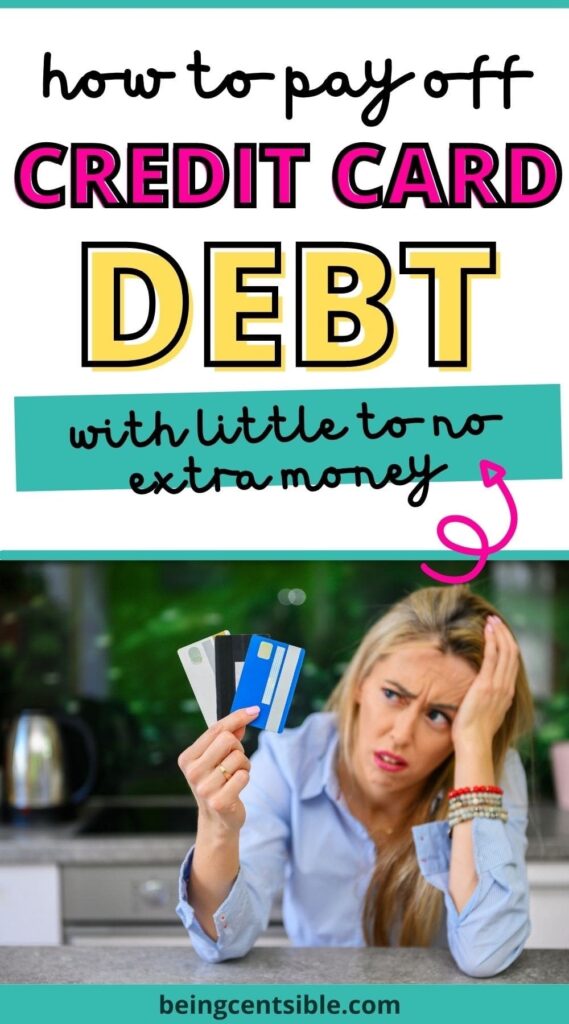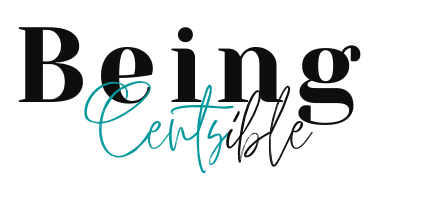Do you have credit card debt? Do you want to pay it off fast but are unsure how to get started? You’re in luck! In this post, I share proven steps to pay credit card debt off quickly.
There are many options to manage your debt, like getting a debt consolidation loan, applying for personal loans, or a credit card balance transfer. While these options may seem like they solve your problem, you’re not getting any real debt relief and are only trading one debt for another. In the case of a debt settlement, you might even hurt your credit score, so make sure to read the fine print.
However, I’m not walking you through a debt management plan in this post. I’m giving you a smart debt repayment plan that you can use to pay off credit cards and other debts like student loans.
Once you apply these tips, you will have peace of mind knowing that you will pay off your credit cards and never get back into debt again. It’s time to break up with the credit card companies for good!
Ready to be debt-free? Read on to learn how to pay off your high-interest debts fast!
Stop Using Your Credit Cards
You would be shocked to learn how many people are trying to pay off their credit card debt but are still carrying the cards in their wallets. That’s too much temptation!
One of the first steps to paying off debt is to put away the cards and stop using them. You want to consider cutting up your credit cards or freezing them. It sounds crazy to freeze your cards, but that’s what a financial advisor once suggested I do. By the time you unfreeze your credit cards, the temptation to use them will usually pass. It’s all a mental game in the end.
If you keep using your credit cards, no payment strategy can help you. The interest charges will continue to grow along with your entire balance. Instead of using credit cards, pay with cash or use your debit card.
Get Your Finances Organized
Once you stop using credit, it’s time to get organized. Start by pulling your credit report and gathering your bank and credit card statements. Then organize your income, expenses, and debts on a spreadsheet. You can download my financial spreadsheets here for free.
The information to include in the spreadsheets is credit card balances, credit limits, interest rates on credit cards, and the minimum payments. Make sure you take note of your credit score to see how it improves as you pay off your debts. Also, list the credit card issuer and enter the credit cards from lowest balance to highest balance. I will show you what to do with your income and expenses in the next section.
Pro Tip: Sign up for financial management software like Personal Capital to keep track of your debts. I like Personal Capital because it helps you track your net worth, which is a way to assess your financial health. There’s nothing more motivating than to watch your debt go down and your net worth go up.
Start a Budget
Now that your finances are organized, you are ready to start a budget. I cannot emphasize how important a budget is if you want to be debt-free. A budget gives you a visual picture of your income, expenses, and debts. If you’re going to get out of credit card debt fast, you need to understand your monthly spending, and a budget will help you do that.
Your bank balance is just a number that doesn’t tell you much about your financial picture, but your budget will show you where you are overspending and what expenses you should consider reducing. Once you know your income and expenses, you can see if you have money to pay down your credit card debt at the end of the month.
There are different budgeting methods, including the 50/30/20 and zero-based budgets. The 50/30/20 budget is perfect for beginners who want to save money. But to pay credit card debt quickly, I recommend the zero-based budgeting method.
A zero-based budget is where you give all your dollars a purpose. To create the budget, you list all your expense categories like housing, utilities, transportation, credit card monthly payments, etc. Then you allocate your income into each category until your income and expenses match. I recommend checking out the budgeting software; You Need a Budget (YNAB). This budgeting method may seem complicated at first, but it is super simple and effective. Just follow the YNAB system, and you will have a zero-based budget in no time. If you get stuck, YNAB has tons of articles and tutorials to help you. You will create a budget and learn how to manage your money like a pro.
Lower Your Monthly Bills
A crazy statistic is that 92 percent of Americans live paycheck-to-paycheck and don’t have any money left at the end of the month. If this is you, there are things you can do to lower your bills.
First, go through your newly created zero-based budget and look for expenses you can cut back on, like cable or your Starbucks habit. You can shop for less expensive cable, start making coffee at home or cut back on the cable and coffee altogether.
You might resist cutting back on cable because you absolutely can’t live without your favorite TV shows. I get it. But consider cutting back temporarily while you pay down that credit card balance. Or consider switching to streaming services like Netflix and Hulu.
If you want to get out of credit card debt quickly, making some temporary cutbacks will help you reach your goal faster.

Find Extra Money
Once your finances are organized and you have a working budget with lower expenses, it’s time to make money to put toward your debt payments. Nowadays, there are many ways to make extra money to pay off your credit card debt.
Start a Side Hustle
Do you have skills like designing website logos or proofreading? Then check out Fiverr, where you can earn by offering your freelance services. You can also get paid to deliver groceries on the weekend by joining Instacart. The sky is the limit on how you make more money, so get creative! Check out 25 Side Hustle Ideas to Earn Extra Cash for more ideas.
Get Paid for Your Opinion
One popular option to make extra cash is to complete surveys. Many Survey Companies will pay you to take surveys online and from the comfort of your home. You won’t get rich filling out surveys, but you can undoubtedly make side cash to pay down your credit card debt.
Resell Your Household Items
A quick way to make extra cash is to find things around the house that you don’t use. Poshmark is a great option to resell clothes. With Mercari, you can resell just about anything, including books. So start looking around the house and turn your clutter into extra cash.
Cash Back Apps
Have you heard of cash-back apps like Ibotta, which give you money back on your grocery shopping? With Ibotta, not only can you get money back on individual items you purchase, but you can also get $1.00 for every qualified receipt. Believe me, that $1.00 adds up quickly.
Automate Your Savings with Digit
There’s no easier way to find extra cash than to automate your savings with the Digit app. Digit works by analyzing your income and spending and finding money to save towards your goals. When I started with Digit, I linked the app to my bank account, and before I knew it, Digit had saved $400 in one month. The craziest part about it is that I didn’t feel the difference, and the money just got saved. I had no clue I had an extra $400.00 to save until Digit put it aside. There’s no easier way to save money.
Implement the Debt Snowball Method
If you’ve gotten this far, you’ve already made progress toward paying off your credit card debt. Now it’s time to implement a repayment method to take your debt payoff to the next level. It’s called the Debt Snowball Method, and it’s my favorite way to pay off credit card debt for the simple reason it works.
You can also use the Debt Avalanche Method, but the snowball method is the most popular because you tackle your debt from smallest to largest, which helps you gain momentum fast.
To pay off credit card debt with Debt Snowball Method, you need to:
- List all your credit cards in order from smallest balance to largest. You can use your spreadsheet from earlier.
- Pay minimums on all credit cards, except the one with the lowest balance, until you pay it off.
- After you pay off the credit card, take the monthly payment and add it to the next credit card’s minimum payment.
- Repeat this process until you pay off all credit cards.
The Debt Snowball Method focuses on paying your smallest debt first and then snowballing those payments into larger debts with each successive paydown. Using this method reduces stress by quickly helping you make progress on smaller debts and motivating you to tackle the bigger balances.
A Word of Caution on Transfering Balances or Getting a Debt Consolidation Loan
You may be tempted to apply for a personal loan, consolidate your debt using a balance transfer card, or work with a debt settlement company, but before you do, give these tips a try. Getting a debt consolidation loan or using a balance transfer credit card may seem like a good idea, but you are just creating new debt and paying transfer fees.
I’ve seen these types of debt relief options backfire because now you have several paid-off credit cards with zero balances just waiting for you to use them again. So instead of just having one monthly payment from your old debt, you now have new debt you are wracking up.
It’s better to pay off your credit card debts through hard work and determination because, in the process, you learn how to manage your money and stay clear of debt for good.
Pro Tip: Managing money also requires the right mindset, so take some time to create a positive relationship with money. Check out 11 Negative Money Beliefs Limiting Your Wealth
It’s Time to Take Action
I hope this article has helped you take the next step in getting out of debt. Now that you understand how to pay off credit cards quickly, it’s time for action! It won’t be easy, and it will require a lot of determination on your part, but if you want financial freedom from credit card debts, there is no better option than following these steps.
Remember, as long as you keep living paycheck-to-paycheck or borrowing money to cover expenses. Life won’t be fun. The only way out of crippling credit card debt is through hard work and dedication—and now, with these tips, you know exactly what needs to happen next!
Related Articles on Paying Off Debt:







